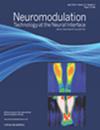Electroacupuncture at ST36 Relieves Visceral Hypersensitivity Based on the Vagus-Adrenal Axis in the Remission Stage of Ulcerative Colitis
IF 3.2
3区 医学
Q2 CLINICAL NEUROLOGY
引用次数: 0
Abstract
Background and Aims
Although electroacupuncture (EA) at ST36 has been shown to alleviate visceral hypersensitivity in rats with ulcerative colitis (UC), the exact mechanism remains unknown. This study aims to investigate whether EA can effectively inhibit the activity of enteric glial cells (EGCs) through the adrenergic antiinflammatory pathway and thereby attenuate visceral hypersensitivity in rats with UC in remission.
Materials and Methods
Sprague-Dawley rats were continuously fed 5% dextran sulfate sodium (DSS) for seven days to establish intestinal inflammation. After seven days of remission, rats underwent EA (n = 6, 100 Hz, 1 mA, one hour) or sham EA (n = 6) for 14 days. A normal control group (n = 6) received no treatment. Inflammation was assessed using disease activity index (DAI) inflammatory cytokines. Visceral sensitivity was examined weekly by abdominal withdrawal reflexes (AWR) score. We used the enzyme-linked immunosorbent assay method to measure levels of norepinephrine (NE) in serum after EA. The expression of EGCs, levels of inflammatory cytokine S100 calcium-binding protein β (S100β), and associated pathway proteins receptor for advanced glycosylation end-products (RAGE), myeloid differentiation factor 88 (MyD88), and nuclear factor-κ B (NF-κB) in the colon were assessed using immunofluorescence staining and Western blotting.
Results
The Model group exhibited elevated DAI scores, shortened colon, and increased inflammatory cytokines; the EA group showed significant relief of symptoms. The Model group exhibited elevated visceral hypersensitivity, which resolved after 14 days of EA treatment. The EA group exhibited higher NE levels than did the Model group. Compared with the Model group, the expression of EGCs in the colonic submucosa was reduced in the EA group, and the expression of S100β, RAGE, MyD88, and NF-κB proteins were downregulated.
Conclusion
This study suggests that EA potentially reduces visceral hypersensitivity in UC by decreasing the activity of EGCs and the release of S100β through noradrenergic pathway.
电针ST36部位缓解溃疡性结肠炎缓解期基于迷走-肾上腺轴的内脏超敏反应
背景和目的:虽然在ST36处电针(EA)已被证明可以减轻溃疡性结肠炎(UC)大鼠的内脏过敏,但确切的机制尚不清楚。本研究旨在探讨EA是否能通过肾上腺素能抗炎途径有效抑制肠胶质细胞(enteric glial cells, EGCs)活性,从而减轻UC缓解期大鼠内脏超敏反应。材料与方法:用5%葡聚糖硫酸钠(DSS)连续喂养sd大鼠7 d建立肠道炎症。缓解7天后,大鼠进行EA (n = 6, 100 Hz, 1 mA, 1小时)或假EA (n = 6),为期14天。正常对照组(n = 6)不进行治疗。使用疾病活动性指数(DAI)炎症因子评估炎症。每周通过腹部戒断反射(AWR)评分检查内脏敏感性。采用酶联免疫吸附法测定EA后血清去甲肾上腺素(NE)水平,采用免疫荧光染色和Western blotting检测EGCs表达、炎性细胞因子S100钙结合蛋白β (S100β)、晚期糖基化终产物相关通路蛋白受体(RAGE)、髓样分化因子88 (MyD88)和核因子-κB (NF-κB)水平。结果:模型组大鼠DAI评分升高,结肠缩短,炎症因子升高;EA组症状明显缓解。模型组大鼠内脏超敏反应升高,EA治疗14天后消退。EA组NE水平高于模型组。与模型组比较,EA组大鼠结肠粘膜下层EGCs表达降低,S100β、RAGE、MyD88、NF-κB蛋白表达下调。结论:本研究提示EA可能通过去甲肾上腺素能途径降低EGCs活性和S100β的释放,从而降低UC的内脏超敏反应。
本文章由计算机程序翻译,如有差异,请以英文原文为准。
求助全文
约1分钟内获得全文
求助全文
来源期刊

Neuromodulation
医学-临床神经学
CiteScore
6.40
自引率
3.60%
发文量
978
审稿时长
54 days
期刊介绍:
Neuromodulation: Technology at the Neural Interface is the preeminent journal in the area of neuromodulation, providing our readership with the state of the art clinical, translational, and basic science research in the field. For clinicians, engineers, scientists and members of the biotechnology industry alike, Neuromodulation provides timely and rigorously peer-reviewed articles on the technology, science, and clinical application of devices that interface with the nervous system to treat disease and improve function.
 求助内容:
求助内容: 应助结果提醒方式:
应助结果提醒方式:


